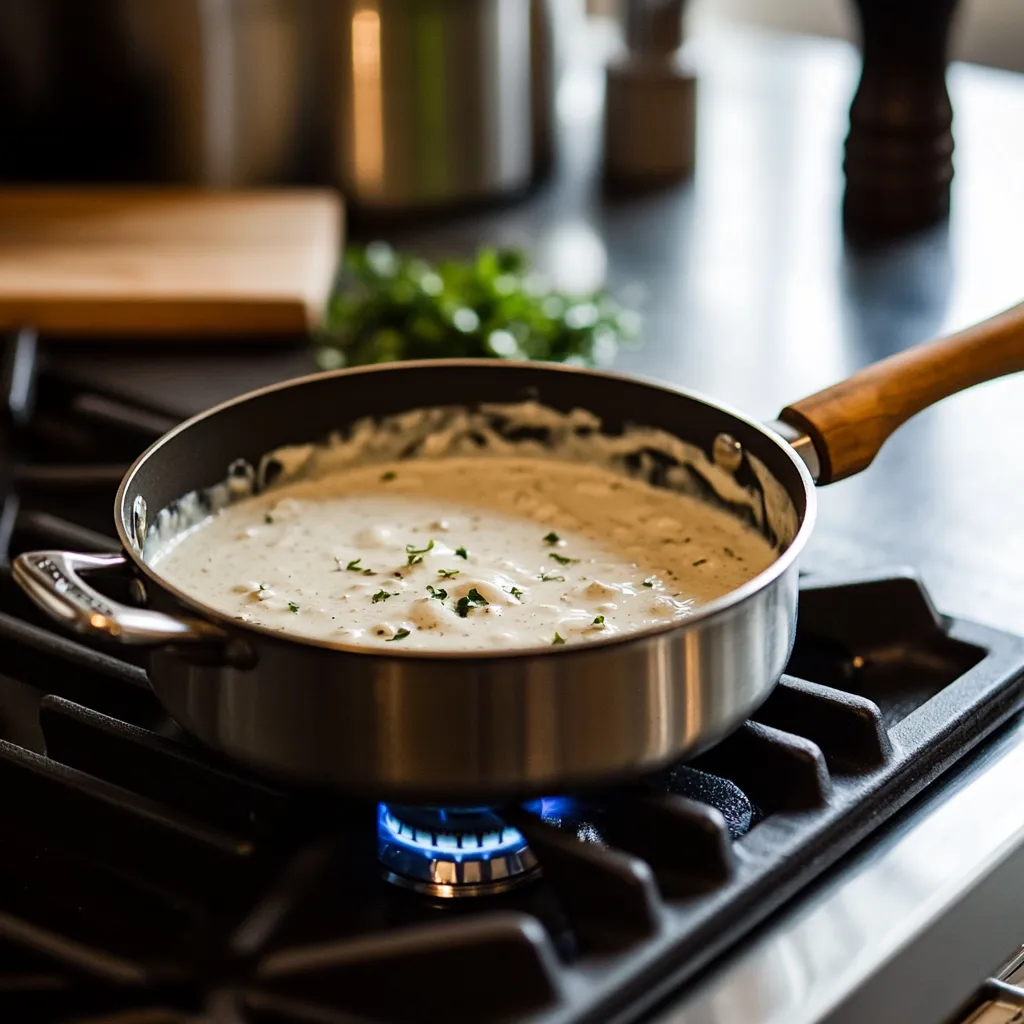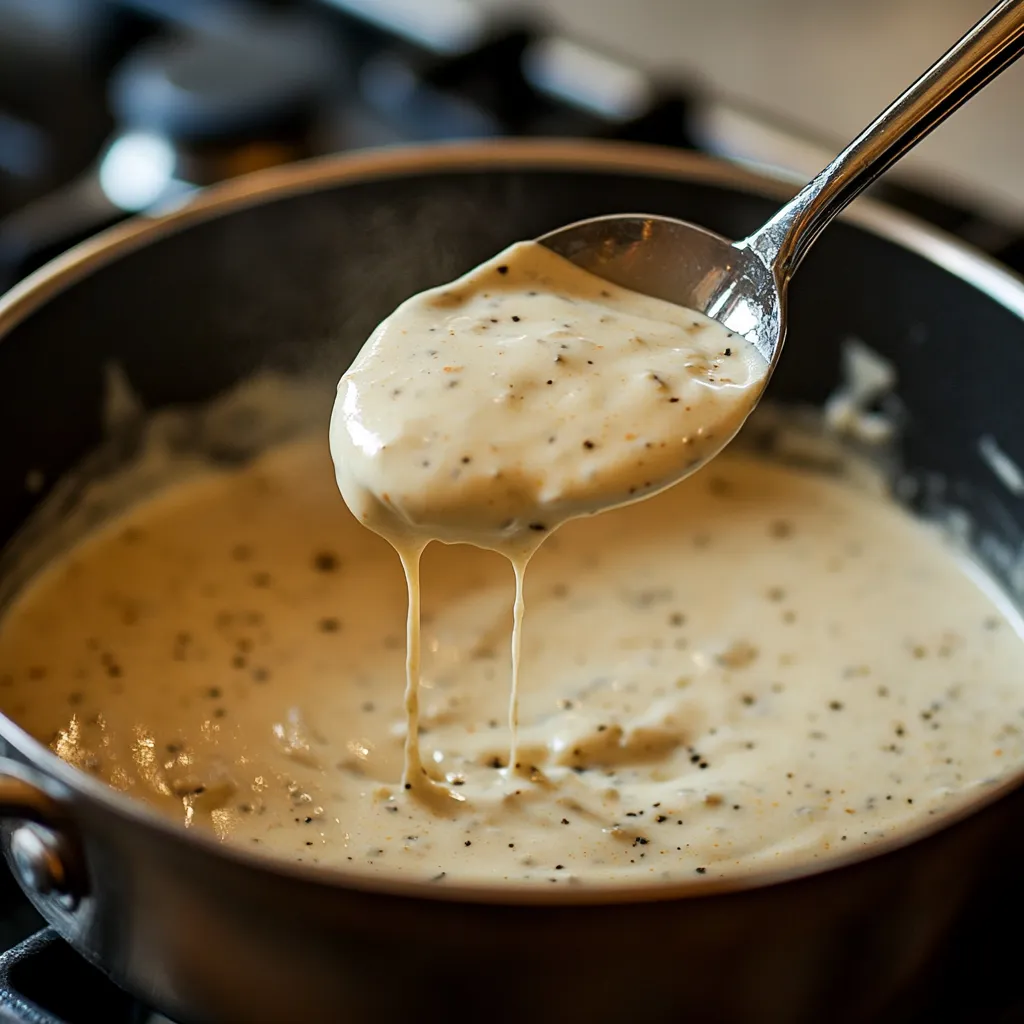 Save to Pinterest
Save to Pinterest This creamy Cajun Alfredo sauce transforms ordinary pasta into something extraordinary with its perfect balance of rich creaminess and bold Cajun spices. I developed this recipe after visiting New Orleans and falling in love with the incredible fusion of flavors that defines Cajun cuisine.
I first made this sauce for my skeptical inlaws who claimed to dislike spicy food. By the end of dinner everyone was asking for the recipe and now it's requested at nearly every family gathering.
Ingredients
- Unsalted butter creates a rich base without making the sauce too salty
- Fresh garlic provides essential aromatic flavor that bottled versions simply cannot match
- Heavy cream produces that luxurious silky texture that defines a proper Alfredo
- Cajun seasoning brings authentic Louisiana flavor look for brands that list paprika and thyme among the first ingredients
- Fresh Parmesan cheese makes all the difference pregrated versions contain anticaking agents that affect melting
- Freshly ground black pepper adds subtle heat and complexity that preground lacks
- Salt to balance and enhance all the other flavors
Step-by-Step Instructions
- Melt the Butter
- Heat a medium saucepan over medium heat and add butter allowing it to melt completely until it starts to bubble slightly but not brown. This creates the perfect fatty base for your sauce.
- Sauté the Garlic
- Add minced garlic to the melted butter and cook for exactly one minute stirring constantly. You'll know it's perfect when your kitchen fills with that heavenly aroma but before the garlic takes on any brown color which would make it bitter.
- Create the Base Sauce
- Pour in the heavy cream while continuously stirring then add your Cajun seasoning and black pepper. Make sure to scrape the bottom of the pan to incorporate any garlic bits that might have stuck.
- Simmer to Perfection
- Bring the mixture to a very gentle simmer where you see small bubbles forming around the edges not a rolling boil. Reduce the heat to low and let it cook for 5 to 7 minutes stirring occasionally. The sauce should coat the back of a spoon when it's reached the right thickness.
- Add the Cheese
- Remove the pan from heat completely this is crucial and then slowly sprinkle in the Parmesan while stirring in a figure eight motion. Continue stirring until every bit of cheese has melted creating a smooth velvety sauce with no grainy texture.
- Final Seasoning
- Taste the sauce and add salt as needed. Remember that Parmesan is already salty so add gradually tasting as you go until the flavors pop but don't overwhelm.
 Save to Pinterest
Save to Pinterest My absolute favorite way to enjoy this sauce is with blackened shrimp and linguine. Something magical happens when the spice from the blackening seasoning meets the creamy richness of the Alfredo. My husband proposed to me after I made him this dish on our third date so I might be slightly biased about its powers.
Make It Your Own
The beauty of this Cajun Alfredo sauce lies in its adaptability. For a substantial meal fold in sautéed bell peppers onions and andouille sausage during the final step. This creates a more complete dish that honors traditional Cajun flavor profiles while maintaining the creamy decadence of classic Alfredo.
Storage and Reheating
Store leftover sauce in an airtight container in the refrigerator for up to three days. When reheating do so gently over low heat adding a splash of cream if needed to restore the original consistency. Avoid microwaving as this can cause the sauce to separate and become oily. Stir frequently while reheating to maintain that smooth texture.
Perfect Pairings
This Cajun Alfredo sauce pairs beautifully with fettuccine or linguine but don't limit yourself. Try it with cheese stuffed tortellini for an indulgent twist or over zucchini noodles for a lower carb option. For protein blackened chicken shrimp or even grilled tofu absorb the flavors wonderfully making this a versatile sauce for various dietary preferences.
 Save to Pinterest
Save to Pinterest Common Recipe Questions
- → How can I adjust the spice level of the Cajun Alfredo sauce?
You can easily customize the spice level by adjusting the amount of Cajun seasoning. Start with 2 teaspoons and taste before adding more. For a milder sauce, use less seasoning or choose a milder Cajun blend. To increase heat, add a pinch of cayenne pepper or a dash of hot sauce along with the Cajun seasoning.
- → What proteins pair well with this Cajun Alfredo sauce?
This versatile sauce pairs beautifully with many proteins. Grilled chicken, blackened shrimp, or sautéed crawfish add authentic Louisiana flair. For seafood lovers, try it with scallops or salmon. You can also use it with grilled steak strips or keep it vegetarian with roasted vegetables or plant-based protein alternatives.
- → Can I make this sauce ahead of time?
Yes, you can prepare this sauce up to 2 days in advance. Store it in an airtight container in the refrigerator. When ready to use, reheat it gently on low heat, stirring frequently. You may need to add a splash of cream or milk if the sauce has thickened too much during storage. Avoid microwaving as this can cause the sauce to separate.
- → How can I make this Cajun Alfredo sauce dairy-free?
For a dairy-free version, substitute the butter with olive oil or a plant-based butter alternative. Replace heavy cream with full-fat coconut milk or cashew cream for richness. Instead of Parmesan, use nutritional yeast for a cheesy flavor. The texture and taste will differ from the original, but it will still have the Cajun spice profile you're looking for.
- → What pasta shapes work best with this sauce?
This creamy sauce pairs wonderfully with pasta shapes that can hold the sauce well. Fettuccine is traditional for Alfredo, but penne, rigatoni, or cavatappi work excellently as their ridges and hollow centers capture the sauce. For a lighter option, linguine or spaghetti also complement the creamy texture. Whole grain or gluten-free pasta varieties will work just as well.
- → What are signs that I've overcooked the sauce?
Overcooked Cajun Alfredo sauce will show signs of separation, with the fat breaking away from the cream. The texture might become grainy rather than smooth, and it could develop a slightly burnt or overly reduced flavor. To prevent this, always cook on low heat after adding the cream, never allow the sauce to boil, and remove from heat before stirring in the cheese.